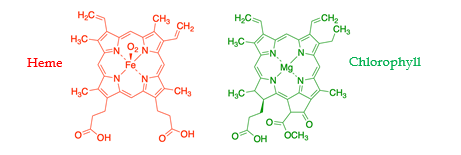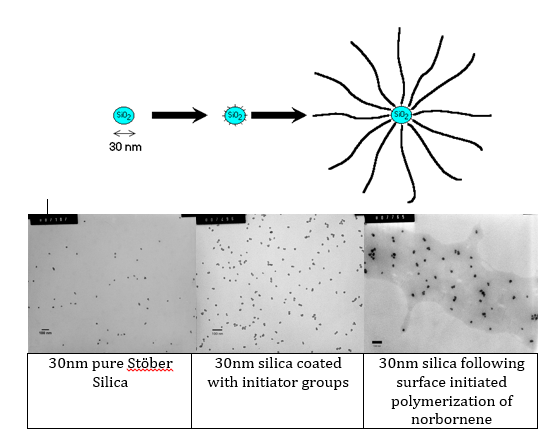To: 23/03/2022 14:00
Natural processes of photosynthesis have increasingly inspired the fabrication of nanostructured molecular materials with advanced light-harvesting and electron-transfer features. [1-4] In this context, supramolecular chemistry allows diverse and disparate molecular building blocks to be amalgamated into highly ordered architectures through the process of self-assembly. These mimic the key functions of the photosynthetic reaction center; light harvesting, charge separation, charge transport, energy transfer, and catalysis. [5,6] Porphyrinoids, the basic building block of chlorophylls, have emerged as an exceptional class of light harvesters and electron donors in such supramolecular electron donor-acceptor hybrids [7-10]. A variety of significant applications from solar cells, hydrogen production to medical applications have been reported.

References:
- M. R. Wasielewski, Chem. Rev., 1992, 92, 435-461.
- R. E. Blankenship, Molecular Mechanisms of Photosynthesis, Blackwell Science, Oxford, U.K., 2002.
- D. Gust, T. A. Moore and A. L. Moore, Acc. Chem. Res., 1993, 26, 198-205.
- T. Nakanishi, Supramolecular Soft Matter, Applications in Materials and Organic Electronics, 2011.
- D. M. Guldi, Chem. Soc. Rev., 2002, 31, 22-36.
- F. D’Souza, Handbook of Carbon Nanomaterials, Synthesis and Supramolecular Systems, 2011.
- M. K. Panda, K. Ladomenou, and A. G. Coutsolelos, Coord. Chem. Rev. 256, (2012), 2601-2627.
- K. Ladomenou, M. Natali, E. Iengo, F. Scandola, G. Charalampidis, A. G. Coutsolelos Coord. Chem. Rev., 304-305, 2015, 38-54.
- C. Stangel, C. Schubert, S. Kuhri, G. Rotas, J.T. Margraf, E. Regulska, T. Clark, T. Torres, N. Tagmatarchis, A. G. Coutsolelos, D. M. Guldi. Nanoscale 2015, 7, 2597-2608.
- V. Nikolaou, K. Ladomenou, G. Charalambidis, A. G. Coutsolelos, Coord. Chem. Rev. 306 (2016) 1–42.
To: 30/03/2022 14:00
Metal mediated polymerizations can be initiated from particle surfaces to provide nanocomposite materials with uniquely interesting compositions. Two logical systems with end-functional coupling agents that can be chosen to provide initiating ligands for this work are thiols on gold and silanes on silica. One might expect given the wealth of literature that the major difficulties in utilizing either system for this purpose had been overcome. Unfortunately several tools appropriate for gold nanoparticles are not effective for silica nanoparticles and vice versa. Nonetheless we have prepared well defined structures using surface initiated polymerizations from gold and silica nanoparticles where the polymerizations have been mediated by either ruthenium alkylidenes or titanium alkoxide organometallic species.
Efforts in our laboratory have also shown that the rate of initiation is sensitive to the structure of a layer of tethered initiators when polymerizations are initiated from particle surfaces. The results of this range from broadened molecular weight distributions to no polymerization at all. It is also desirable to make the polymerization chemistry independent of the nature of the substrate. Both of these issues can be addressed through manipulation of the surface coverage containing the tethered initiator.

To: 02/03/2022 14:00
An overview of the Physics Dept., Electronics Lab activities and projects will be presented. One of this activities, and in particular the topic of Crosstalk in mixed-signal System on Chip will be addressed. Coupling occurs between noise transmitters, which are usually fast switching digital blocks and noise receivers, which are sensitive analog / RF blocks, and it takes place due to the conductive nature of the silicon substrate, the devices interface and the Chip - package interaction. In this presentation, the SoC crosstalk degradation phenomenon is presented and challenges and limitations are addressed versus the design methodology.
Position Description
Support external users visiting the Facility to carry out collaborative research. Carry out research in a broad range of nonlinear spectroscopic applications related to bio systems and novel materials.
For the full announcement, follow the link "Related Documents"
Required Qualifications
- PhD degree in Physical Sciences or Engineering
- Experience in spectroscopy for biological applications
- Experience in imaging biological samples at microscopic level using ultrashort laser pulses
- Relevant scientific publications in peer-review journals
Desirable Qualifications
Experience in developing and upgrading prototype experimental imaging devices
Application Procedure
Interested candidates who meet the aforementioned requirements are kindly asked to submit their applications to the address (hr@iesl.forth.gr), with cc to Dr Costas Kalpouzos (kalpouzo@iesl.forth.gr).
In order to be considered, the application must include:
- Application Form (Form Greek or Form English to the left)
- Brief CV
- Scanned copies of academic titles


